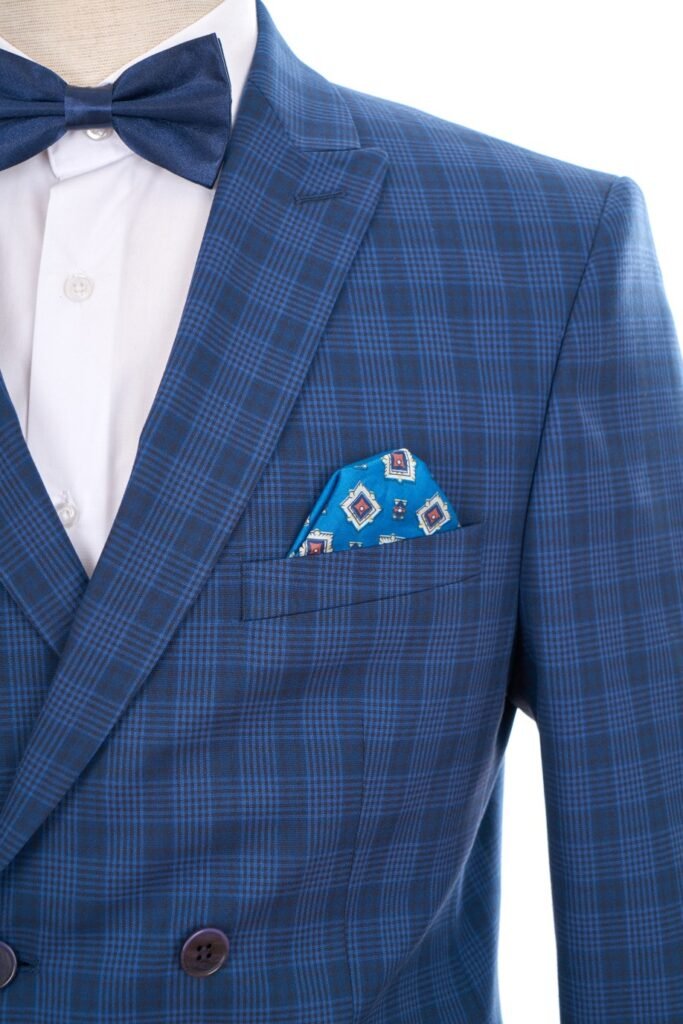When it comes to men’s style, few things exude confidence and elegance quite like a well-tailored suit. While classic solid colors are timeless, adding patterns into your wardrobe can elevate your look, showing off both personality and sophistication. However, mixing patterns isn’t always straightforward—done wrong, it can look loud and chaotic. Done right, it creates a polished, stylish, and distinctive outfit that sets you apart.
If you’ve ever wondered how to master the art of mixing suit patterns without clashing, this guide breaks it down into simple, actionable steps.

Why Mix Patterns?
Pattern-mixing adds depth, dimension, and character to an outfit. Instead of appearing flat or monotonous, combining stripes, checks, or prints can create a layered, intentional look. It also shows that you understand style beyond the basics, making you stand out in both professional and social settings.
But remember—subtlety is key. The goal is to achieve balance and harmony, not to overwhelm the eye.
Rule 1: Start with One Dominant Pattern
The first step in pattern-mixing is choosing a dominant pattern, usually found in your suit or jacket. This could be a pinstripe suit, a windowpane check blazer, or even a houndstooth pattern. Once you have a bold, primary design, everything else you wear should support it.
For example:
- A pinstripe suit pairs well with a dotted or geometric tie.
- A checkered blazer looks sharp with a striped shirt.
Think of the dominant pattern as the “main character,” while the secondary and tertiary patterns are “supporting roles.”

Rule 2: Vary the Scale of Patterns
One of the golden rules of pattern-mixing is to change the size of patterns. Mixing two patterns of the same scale—like thick stripes on a shirt with thick stripes on a tie—creates visual clutter. Instead, contrast large patterns with smaller ones.
Examples:
- Large windowpane suit + thin striped shirt + small dotted tie
- Bold check blazer + fine micro-pattern shirt + textured tie
This variation allows each pattern to stand out while still blending seamlessly.
Rule 3: Stick to a Unified Color Palette
Even the most daring pattern combinations can look sharp if the colors coordinate. A consistent palette ties everything together, preventing the outfit from feeling too busy.
Tips for color coordination:
- Use complementary shades (e.g., navy suit, light blue shirt, burgundy tie).
- Keep one neutral base (gray, navy, black, beige) and add accents.
- Avoid more than three strong colors in one outfit.
If you’re new to mixing, start with muted or classic tones before experimenting with brighter hues.
Rule 4: Use Solids as Anchors
Patterns can be eye-catching, but too many at once can overwhelm. Solid pieces—like a plain tie, shirt, or pocket square—act as “anchors” that calm down the overall look.
Example:
If you’re wearing a pinstripe suit and a patterned tie, balance it with a solid-colored shirt. Alternatively, if both your shirt and suit are patterned, go with a solid tie to keep things grounded.
Rule 5: Pay Attention to Accessories
Accessories like ties, pocket squares, and socks are excellent ways to experiment with patterns on a smaller scale. They let you try bolder designs without overwhelming the entire outfit.
Guidelines for accessories:
- Your tie should contrast with your shirt but stay within the same color family.
- A patterned pocket square should complement your tie rather than duplicate it.
- Socks can be playful but shouldn’t distract from the suit’s elegance.
Remember: accessories are the “fine print” of your outfit—they should enhance, not dominate.
Rule 6: Texture Counts Too
Pattern-mixing isn’t limited to prints. Textures, like tweed, linen, silk, or wool, can create visual variety even in solid colors. For instance, a wool suit with a silk tie and a cotton shirt offers contrast that feels stylish without needing bold prints.
Texture is especially useful for men who prefer subtlety but still want a layered, dynamic look.
Beginner-Friendly Pattern Combinations
If you’re just starting out, here are a few safe, stylish combinations to try:
- Pinstripe Suit + Solid Shirt + Patterned Tie
A timeless mix where the tie adds personality while the shirt keeps things simple. - Checkered Blazer + Striped Shirt + Solid Tie
Creates a bold but balanced statement—perfect for smart-casual or business settings. - Windowpane Suit + Micro-Pattern Shirt + Dotted Tie
Combines different scales of patterns for depth without looking chaotic. - Solid Suit + Patterned Shirt + Patterned Tie (Different Scales)
A great way to experiment while using a neutral base.
Common Mistakes to Avoid
- Matching patterns too closely: Identical stripes or checks can clash.
- Overusing bold colors: Bright patterns in every piece look distracting.
- Forgetting proportions: Patterns should enhance your body shape, not overwhelm it. For example, wide stripes elongate, while large checks can broaden your frame.
- Ignoring occasion: Subtle patterns work for business; bolder ones are best reserved for casual or creative settings.
Confidence is the Final Ingredient
At the end of the day, the most important rule of pattern-mixing is wearing it with confidence. If you feel good in your outfit, it will show. The right balance of patterns communicates both style knowledge and self-assurance, leaving a lasting impression wherever you go.
Final Thoughts
Pattern-mixing might seem intimidating, but with a few simple rules—choosing a dominant pattern, varying scales, sticking to a color palette, and using solids as anchors—you can master it with ease. Start small, experiment with accessories, and gradually build up your comfort level.
A suit isn’t just clothing; it’s a statement. And when you blend patterns thoughtfully, that statement becomes one of confidence, sophistication, and personal style.

